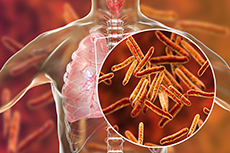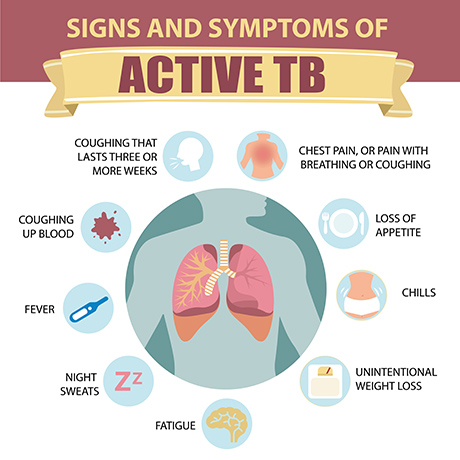About Tuberculosis

What is Tuberculosis
Tuberculosis (TB) is a disease caused by Mycobacterium tuberculosis, a germ that spreads from person to person through the air. TB usually affects the lungs, but it can also affect other parts of the body, such as the brain, the kidneys, or the spine. A person with TB disease can die if they do not get treatment.
TB germs go into the air when a person with TB disease of the lungs or throat coughs, sneezes, speaks, or sings. These germs can stay in the air for several hours, depending on the environment. People who breathe in the air containing these TB germs can become infected. This is called TB infection (also known as latent TB infection). If untreated, TB infection can become TB disease.
Difference Between TB Infection and TB Disease
People with TB infection have TB germs in their bodies, but they are not sick because the germs are not active. These people do not have symptoms of TB disease and they cannot spread the germs to others. But, they may develop TB disease in the future. They are often prescribed treatment to prevent them from developing TB disease.
Symptoms of TB Disease
People with TB disease can spread the germs to others. They must take treatment for the disease to get better so they cannot spread TB to other people.
People with TB disease may have symptoms such as:
- Cough
- Fever
- Chills
- Night sweats
- Weight loss
- Feeling tired and unwell
| TB Infection | TB Disease |
|---|---|
|
|
Tuberculosis Screening
There are two ways to screen for tuberculosis infection:
- The Tuberculin Skin Test (TST)
- Blood tests known as Interferon Gamma Release Assays (IGRAs)
Differences between TST and IGRA tests for TB infection
| TST | IGRA | |
|---|---|---|
| Single patient visit | No, 2 visits, one to place the test & one to read test, 2-3 days later. | Yes, the test is collected on a single blood draw |
| Test results | Subjective, because someone must place and read the test correctly | Objective, because the test is processed in a laboratory after the blood draw. |
| Results affected by Bacillus Calmette-Guerin (BCG) Vaccine | Yes, this test can show a false positive reaction to BCG | No, this test does not interact with the BCG vaccination status |
Tuberculosis Treatment
Treating TB disease generally requires many medications given for six to nine months. Treating people with drug-resistant TB requires different medications. Patients may be on these medications for up to a year or even two years.
TB infection can be treated using shorter course medication regimens for a shorter amount of time. To cure the infection, you must take all the medication prescribed
Directly Observed Therapy
TB clinics treat TB disease through directly observed therapy (DOT). DOT involves a health care worker (HCW) meeting with the patient on the days when medication is prescribed. The HCW watches the patient take their medication. This helps to make sure the person is cured of TB and allows the TB nurse or HCW to closely monitor the person for medication side effects. DOT is required for every person in Texas with known or suspected active TB disease and is recommended for children under age five with known or suspected TB infection.
Visit Frequently Asked Questions for more answers.
|
|
|




